Canada Remembers Times - 2009 Edition - Page 1
Download the PDF Version.
PDF Version 2.32 MB
Canadians in the Italian Campaign
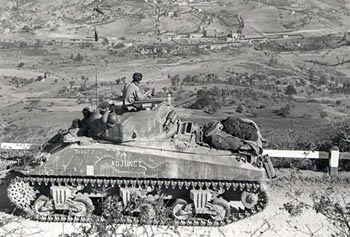
Canadian soldier on tank near Potenza, Italy.
September 1943.
Photo: Library and Archives Canada PA136197
At dawn on July 10, 1943, the Allies launched “Operation Husky,” the invasion of southern Sicily, with Canadians coming ashore at Pachino.
The four-week battle was successful, but at a cost of more than 550 killed and more than 650 Canadians wounded.
This marked the beginning of the Italian Campaign of the Second World War. It was a series of Allied advances through the mountainous terrain of the island of Sicily and mainland Italy, which were under German control. Canadian troops played an important role in several battles between July 1943 and February 1945.
Germany needed to retain control of mainland Italy and reinforced its mountainous defences. A difficult Allied advance also encountered heavy rains, stifling dust or severe winter weather. Shortly before Christmas 1943, Canadians were thrust into a fierce battle for Ortona. Stones littered the steep and narrow streets and made it impossible for tanks to pass. Finally, on December 28, the coastal town was taken. Canadian troops then continued their push through Italy, fighting in the Liri Valley and helping breach the Hitler Line, in central Italy.
Canadian participation in the Italian Campaign ended shortly before the final victory in Italy. By February 1945, the Canadians were shifted to join the 1st Canadian Army in northwest Europe. Canadian troops fought bravely in Italy, suffering approximately 26,000 casualties, including almost 6,000 dead.
Profiles of Courage
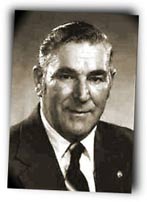
Daniel J. MacDonald. Photo: VAC
A former Minister of Veterans Affairs, the late Honourable Daniel J. MacDonald served as a sergeant in Italy during the Second World War. On December 21, 1944, at the Senio River, an exploding shell resulted in the amputation of his left arm and leg. MacDonald married after the war and returned to Bothwell, Prince Edward Island, to farm, raise seven children and later enter provincial and federal politics.
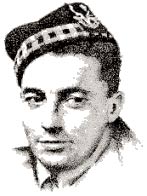
Private Ernest "Smokey" Smith, VC. Photo: VAC
Private Ernest “Smokey” Smith of British Columbia served in the Italian Campaign and earned a Victoria Cross for his actions at the Savio River on October 21 and 22, 1944. Smith died in 2005, the last living Canadian Victoria Cross recipient.
Up the Taedong River in a Destroyer
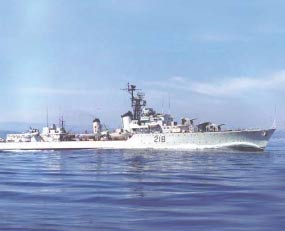
Canadian destroyer HMCS Cayuga.
Photo: Department of National Defence
In December 1950, during the Korean War, the port city of Chinnampo was facing a massive enemy advance and the order was given to evacuate. Six United Nations (UN) ships, including three Canadian destroyers, were sent to help. It would not be easy—Chinnampo was more than 30 kilometres up the Taedong River, a waterway heavily mined by the North Koreans.
Two UN ships ran aground and were forced to turn back but the remaining ships, led by HMCS Cayuga, reached the city after a nerve-wracking passage through shallow, confusing channels on a pitch-dark night. The destroyers guarded against possible enemy attack and helped destroy the railway lines, docks and supplies left behind, so they could not be used by the enemy. Their job done, the ships returned safely to the ocean.
Today, Canadian sailors continue to serve far from home. Canadian ships have been regularly patrolling the waters off southwest Asia in support of the war on terror.
Canadians Defend Nicosia Airport
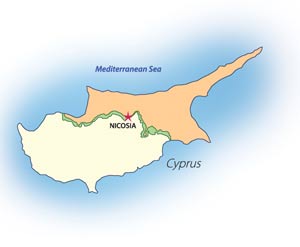
Quick thinking is often the best defence. In 1974, Turkish soldiers invaded the small Mediterranean island of Cyprus, a key target being the airport in the capital city of Nicosia. With only a few heavy weapons, Canadian peacekeepers cleverly patrolled the airport under cover of darkness, creating the impression of a well-guarded location. The tactic worked. The Turks withdrew and the Canadians retained control of the airport.
To learn more, search the Veterans Affairs Canada Web site under “Cyprus.”
Flying Aces
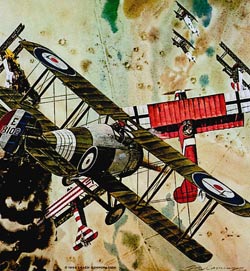
Painting of William Barker, VC, “ The Man Who Wouldn’t Die,” by Merv Corning, from the Esterline Leach International Heritage of the Air Collection. Used with permission.
A “Flying Ace” is a military aviator credited with bringing down at least five enemy aircraft in combat. There were more than 180 Canadian aces during the First World War. Three of them ranked among the top 10 aces of the war: Billy Bishop (72 victories), Raymond Collishaw (61 victories) and Donald MacLaren (54 victories). William Barker narrowly missed being in the top 10, with 50 victories. He is one of Canada’s most decorated servicemen. He received the Victoria Cross, the Distinguished Service Order and the Military Cross, among other honours.
Youth and Remembrance
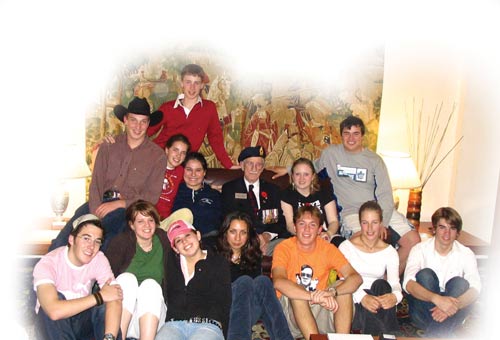
Canadian youth with Veteran Douglas Langtree in Italy, 2004.
Photo: VAC
Many Canadians who fought in Italy were not much older than today’s high school students. Lizann Garbutt, a 17-year-old from Manitoba, took part in a Veterans Affairs Canada (VAC) Youth Learning Journey to Italy in 2004. She researched a soldier from Manitoba, killed in Italy in 1944 at the age of 24.
"After doing my presentation on Lance Corporal Argue in the Cassino War Cemetery, I felt a greater appreciation for what all of the soldiers did ... you see all the headstones jutting up out of the ground and all the names of the young soldiers, many of them only nineteen years and younger".
"I think about what I plan on doing in two years and I know that I am able to have the freedom and choices that I have today because these young boys, these young men, fought for my freedom and the freedom that all Canadians enjoy today".
Canadians are still serving far from home in places like Afghanistan, Haiti and the Sudan.
- Date modified: